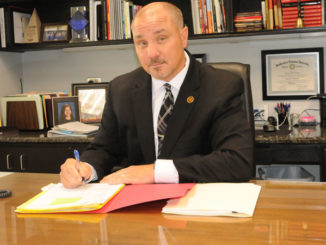
30 years ago this week, the Luling-Destrehan ferry collided with a Norwegian tanker, killing 78 people instantly and changing the lives of survivors forever
ON OCTOBER 20, 1976, at 6:00 a.m., pilot Egidio Auletta wheeled the George Prince ferry away from its mooring at the Destrehan dock and began a slow chug across the Mississippi River toward Luling. Unbeknownst to him, the boat loaded with working men and their cars and trucks was on a collision course with destiny, which, in this case, stood as tall as a skyscraper and even had a name – Frosta.Auletta had been drinking the night before and had a blood alcohol level just .001 percent under the legal limit.
And because he died in the accident, what he knew about the unfolding of the disaster perished with him.
But eyewitnesses say that even ferrypassengers saw the tanker and tried to warn the pilot by frantically honking their car horns and flashing their lights – to no avail.
The Frosta and George Prince collided head-on, flipping the ferry over and dumping passengers and their automobiles into the cold, murky waters of the Mississippi River.
Only 16 people survived – and 78 died – making it the worst ferry disaster in U.S. history.
The untold story that time almost forgot
The accident directly impacted 94 local families with relatives who were passengers on the boat.
But, incredibly, nothing other than news reports were available to document the disaster until then-University of Louisiana at Lafayette communications student Royd Anderson decided to write about it for his thesis.
“I realized that over the past 30 years, the magnitude of this tragedy seemed to have been forgotten,” says Anderson, who went on to earn his master’s of science degree and now teaches television production at Hahnville High School.
“I thought it was necessary to re-examine the case and document it for future generations..”
And that he did in a riveting DVD presentation, “The Luling Ferry Disaster.
As Anderson’s documentary notes, most of the 94 passengers who boarded the ferry on that historic morning were young men going to work at plants across the river.
And, unlike the pilot, they quickly saw that they were in trouble.
So, too, did Frosta Pilot Nicolas Columbo who, at 6:13 a.m., saw the ferry coming dangerously close and signaled the George Prince with two whistle blasts.
He got no reply, and minutes later, he signaled again – and still got no reply.
By 6:15 a.m., it seems, everyone on the ferry knew a collision was imminent, except for the pilot, Auletta.
Many blew their car horns and flashed their headlights. Some grabbed life jackets and hung on to the rail for dear life, bracing themselves for a collision.
They watched in horror as the George Prince cut right in front of the Frosta.
Survivor tells what he saw
Survivor Charles Chatelain, who worked at the Texaco Gas Processing Plant in Paradis at the time, recalls the disaster in Anderson’s documentary.
Chatelain was in his truck at the time of the collision and didn’t see the tanker coming.
“While I was sitting in my truck I heard a man yell, ‘It’s gonna hit,’” he recalls.
“I didn’t know what he meant” until – bam! – the tanker and the ferry hit.
The impact threw Chatelain into his windshield.
“Right before I went in the water, with the ship coming straight at me, I saw the hull running over the people who were in the passenger room,” he says.
“When you’re down in the river and you’re looking at a 700-foot ship, it looks like One Shell Square coming down on you. ”
As his truck sank in the river, Chatelain couldn’t see anything but he could hear the roar of the ship above – and feel the “bump” of other vehicles banging against his truck. His life flashed in front of him, he says.
At a depth of 65 feet, the windshield blew out.
“Once it blew out it shot me like a cannon out of the truck,” he says. Chatelain surfaced fast.
“As I was coming up, I felt a hand come in my hand, but I couldn’t feel a body attached to it. Eventually I just let it go, because I still didn’t feel a body attached to it.”
Truck smashed like an accordian
Chatelain says he started to suck in water and diesel fuel. When he reached the surface, he swam to the middle of the river, away from the ship, so he wouldn’t get sucked into the propellers.
Chatelain made it to the ferry that was now vertical in the river with one end upright above the surface of the water. There he was rescued.
“When they recovered my truck, it was like an accordion,” he says.
Distraught relatives lined the levee, anxious to find out if their loved ones had been on the fateful voyage.
Kenneth and Iris Songy’s 23-year-old son, Richard was on the ferry. Their son was the first one brought up. “I kept praying to let him come up soon and the Lord was very good and he did,” the mother recalls.
The Songys believe Richard was knocked unconscious during the original impact of the accident because of the large bump found on his head.
According to the documentary, others in cars weren’t so fortunate. Scratch marks on doors and windows were discovered in many of the vehicles where desperate escape attempts failed.
Kenneth and Iris’s already strong Catholic faith grew even more after the accident.
“I went to the bible and found Isaiah 43: ‘When you pass through the water, I will be with you. In the river, you shall not drown,’” says Iris Songy,
“I felt that even though Richard had drowned ,the Lord was with him and had taken Him up to be with Him,” said Iris.
Families want monument in St. Charles
Most of the ferryboat dead had lived on the east bank of the Mississippi in St. Charles Parish but, amazingly, the monument that was erected to mark the disaster was erected on the west bank – in St. John Parish.
Dolores Pritchett and her son Tommy, both of Norco, are trying to get the monument moved, for good reason. The youngest victim of the accident, Kevin Pritchett, 16, was Tommy’s brother and Dolores’s son.
“We would like to try to get a monument here” says Tommy Pritchett.
The mother agrees:”It belongs on the east bank. It belongs in St. Charles Parish and on the east bank.”
In 1978, plaintiff lawyer Daniel Becnel Jr. tried to place the monument at the St. Charles Parish courthouse, but officials refused, claiming it would be “too painful a reminder.”
Other officials have since told the Pritchetts that the monument was not put here because St. Charles Parish “didn’t approve” of the design.





Be the first to comment